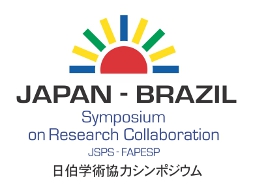Prevention of deforestation in the Amazon will include new Japanese satellite in 2013
Image transmission interrupted in 2011 by the Fukushima nuclear disaster will resume with launch of new equipment capable of producing high quality images, even during the rainy season
By Fernando Cunha, in Tokyo
Agência FAPESP– The prevention of illegal deforestation in the Amazon was the topic of the lecture presented by researcher Masatoshi Kamei from the Remote Sensing Technology Center of Japan (RESTEC) at the Japan-Brazil Symposium on Research Collaboration held by FAPESP in partnership with the Japan Society for the Promotion of Science (JSPS), March 15-16 in Tokyo.
With support from the Japan International Cooperation Agency (JICA), the project “Contribution to the Protection of the Amazon Forest and Fighting Illegal Deforestation” used data transmitted by the Japanese ALOS satellite between 2009 and 2011 to support efforts to combat deforestation.
As a result of the tsunami that caused the Fukushima nuclear reactor accident that year, the work was interrupted due to a fault in the satellite feed system, but will resume with the launch of the ALOS2 satellite scheduled for September 2013.
As a result of the 2010 operation, 1,007 new points of deforestation were detected, 140 of which were cases of illegal deforestation. According to annual statistics on deforestation from Brazil’s National Institute for Space Research (INPE), deforestation has decreased significantly since 2009. “We believe this reduction is due to mass media’s intense advertising surrounding the project,” said Kamei.
In continuous contact with INPE during the ALOS operation, the team from RESTEC sent the Brazilian Institute of the Environment and Renewable Natural Resources (IBAMA) images made from L-band sensors (SAR), capable of producing high quality images of the ground in the region, even when there is cloud cover during the rainy season – an advantage over the optical sensor system in use since 2004.
“Before we send IBAMA the SAR data transmitted by the satellite from space, we still conduct flights over the survey target areas to compare the results,” Kamei said.
According to the researcher, the system was developed in response to a request by IBAMA and the Federal Police, which began a project to transfer technology financed by the JICA.
L-band SAR sensors used in the ALOS satellite and in the new ALOS2 satellites to be launched this year have greater precision in discriminating deforested areas according to wavelength. Images from regions where trees have been cut, generally gray in tone when made from optical sensors, are dark when made from these sensors.
The project used two data servers. One was installed at IBAMA to improve the capacity of the equipment previously used, and the other was developed for the Federal Police. The images are processed every 46 days, and up to the time the ALOS operation was concluded, the results were shared by the two organizations and their local offices in the Amazon.







